
Topics
Guests
- Gustavo Estevafounder of the Universidad de la Tierra in Oaxaca and author of many books, including New Forms of Revolution. Gustavo has also been a columnist for La Jornada.
In the southern Mexican state of Oaxaca, a deadly police crackdown against teachers has left nine people dead and more than 100 wounded. On Sunday, police descended on teachers in the community of Nochixtlán, where they had set up blockades to protest against neoliberal education reform and the arrests of two teachers’ union leaders last week. In Part 2 of our conversation, Mexican scholar and activist Gustavo Esteva talks about the connections between the recent police killings in Oaxaca, the repression of the 2006 rebellion there, and the 2014 disappearance of 43 teachers from Ayotzinapa teachers’ college in Guerrero. “We are struggling for our lives,” Esteva says. “This is not the end of something, but the beginning of something that is very dangerous for our lives, for all of us.”
Click here to watch Part 1.
Transcript
AMY GOODMAN: This is Democracy Now!, democracynow.org, The War and Peace Report. I’m Amy Goodman. We are going to the southern state of Oaxaca in Mexico, where a deadly police crackdown against teachers has left at least eight people dead, more than a hundred wounded. On Sunday, the federal police descended on the teachers, where they had set up blockades to protest against neoliberal education reform and the arrests of two teachers’ union leaders last week on what protesters say are trumped-up charges.
We’re joined by Gustavo Esteva, who is founder of University of the Earth in Oaxaca. That’s Universidad de la Tierra. He’s the author of a number of books, including New Forms of Revolution, has been a columnist for La Jornada.
We started in Part 1 of this conversation by you talking about the police opening fire. Do you know how many people are dead and wounded? And what are the activists saying on the ground, the teachers who were opened fire on, and what is the state saying, Gustavo?
GUSTAVO ESTEVA: Well, the last report we had, it is nine people were literally executed, assassinated. We had 23 people disappeared. We have at least 21 arrested. We have 45 people in the hospital. We have more of a hundred wounded. This is the last report. At the beginning, the police said that they had no firearms. Finally, when we had in Facebook lots of images of the police shooting in a very clear attack on the teachers, they finally accepted that at the end they brought people with firearms. But it was a very concerted attack. It was a very bloody battle against the teachers.
AMY GOODMAN: What exactly are the teachers calling for? In Part 1 of our conversation, you talked about a different kind of education. But what exactly—what are they placing their bodies on the line for, risking death for? And how do you link this to other struggles? And would you link it to the students, the student teachers, who disappeared last year?
GUSTAVO ESTEVA: Well, in several ways. First, the teachers are saying no to what they call an educational reform that is not educational reform, that is bringing basically useless instructions instead of education. The teachers had a whole plan for real education for the indigenous people of Oaxaca. And they are saying no to a reform that put many people, of teachers, out of a job. It is not privatization of education, but abandoning the education, particularly in indigenous areas. Then it is—the teachers are joined by the indigenous people, protecting the education, real education, for the children. But the teachers are also saying no to the so-called structural reforms that basically means a change of ownership and selling our territories. Forty percent of Oaxaca has been sold for 50 years’ concessions to private companies. And the people are resisting, protecting their own territories, because it is basically indigenous territories. And then they are saying yes to a real education and no to this kind of operation dispossessing the people of their own land, their own territory.
And this is, of course, connected with the case of Ayotzinapa, the 43 that we are still missing, because it is again the evidence that in the case of Mexico, we cannot draw a line separating clearly the world of crime and the world of the institutions. It is the same thing for us. We are living in that kind of conditions. It is not the criminal assaulting the power or killing the people; it is the authorities mixed with criminals, are the final—for us, become the same kind of thing, attacking us, killing us, affecting all our lives.
AMY GOODMAN: Are people planning to engage in more actions?
GUSTAVO ESTEVA: Yes. We are just at the beginning of this battle. This is not the end. It was a very bloody weekend, but this is just the beginning. It was really clearly announced. We, in Oaxaca, knew very well that after the elections, that they were waiting for the elections to start this kind of repression. For us, the teachers are clearly the object now, because if they suppress, if they win over the struggle of the teachers, this will be intimidation by all the other people resisting. That is, then, the authorities did not learn the lesson of 10 years ago. They are following the script of 10 years ago. And then we are—we learned the lessons. And then we are beginning a very complex strategy for a long struggle.
AMY GOODMAN: I wanted to go back to 2006, Gustavo, when we spoke to you then, in the midst of a bloody state crackdown on striking school teachers in Oaxaca that sparked a popular uprising against the then-Governor Ulises Ruiz Ortiz over the months, a long rebellion. The residents of Oaxaca turned the city into an autonomous zone. This is you, Gustavo Esteva, speaking 10 years ago about that uprising.
GUSTAVO ESTEVA: Well, the question was that the teachers started their strike, as usual. Every year, they are forced to do this kind of strike to get some improvement in their terrible conditions, terrible economic condition. But that was not something special. That was the usual thing.
But then, after three weeks of their strike, on June 14th, they suffered a terrible, stupid, barbaric repression by the police of Ulises Ruiz, the governor, and that was the detonator of the movement. People started to react immediately, joining and supporting, expressing solidarity with the teachers and expressing the decision to oust the governor. And then this was the detonator of the accumulated discontent of the whole state.
After that, five days later, we have APPO, the creation of this Assembly of the Peoples of Oaxaca. We have a march of almost a million people. That is a third of the population of the state. We have every kind of activities after that, with—that was the consolidation, the expression of a very well organized discontent of the people. This is a movement without leaders, in which the people themselves, very well organized, with amazing courage and amazing capacity of expressing their will. They are organized first to oust this governor, and then to change our society, to create a different kind of society.
AMY GOODMAN: That was you, Gustavo Esteva, 10 years ago. Where has the movement gone? Has the situation changed in this last decade?
GUSTAVO ESTEVA: Well, it has deteriorated. It has not improved in these 10 years. We learned a lot of lessons. The experience is cemented in the hearts and the minds of the people here in Oaxaca. We learned a lot. We will not commit the same mistakes that we committed 10 years ago. I will add to that story of 10 years ago that after the teachers’ mobilization, there was a horrible, horrible media campaign against the teachers, then, after that, the repression. And this is exactly what we are seeing today. After the teachers’ mobilization, we had this horrible media campaign against them, preparing the public opinion for the repression, and then we had the repression this weekend. But we learned the lessons. We are prepared. Basically, one of the things that we are saying that we are trying to apply in the reality is that David can always win over Goliath if he fights in his own territory. We are saying that, for example, the teachers have, as people, as their own territory, the classroom. They can organize the first, the most important struggle in the classroom, trying to bring back real education for the people in Oaxaca. And second, we want also to be in the streets supporting this struggle that is really a very complex struggle. We are struggling for our life. Our movement has consolidated. We have for the first time, after lessons of 2006, conversations between the teachers and the civil society. We have something that we call espacio civil, civil space, where a hundred organizations, grassroots organizations, collectives, community organizations, NGOs, many people are together, joining the teachers in this very complex and long struggle. This is just the beginning.
AMY GOODMAN: In 2006 in Oaxaca, gunmen with ties to the Mexican government shot and killed three people, including the U.S. journalist and activist Brad Will. This is his fellow journalist John Gibler speaking about his slain colleague, Brad.
JOHN GIBLER: He was most interested in filming interviews with just the everyday people and the people that he thought their voices would slip through the cracks in international media coverage and not get out to the people that he was hoping would be paying attention to what was happening here in Oaxaca. … I saw him in several of the mobile brigades, where we joined the people who had commandeered city buses and go around to spray paint government offices. And he was definitely fearless, once he had gotten a feeling for the town, and just going wherever the action was. But he was also—I mean, he was also being smart. He was hanging out with all the national and the local press corps here who know the scene pretty well. But you can only be so smart when paramilitaries jump out of houses with machine guns.
AMY GOODMAN: John Gibler, speaking back a decade ago in 2006 about Brad Will, the U.S. journalist, activist, who was killed in Oaxaca. And, Gustavo Esteva, you have, most recently, last year, the deaths of the student teachers of Ayotzinapa. Can you make the linkages?
GUSTAVO ESTEVA: It’s a very, very—there is a very clear linkage. This is an attack. The attack on the people of Ayotzinapa, these young men and women, has been basically for 15 years. They are trying to dismantle all these schools that are where the sons of the peasants are learning to become teachers for the peasants. They are not studying to leave their communities, but to stay in the communities as teachers. And they have been trying to disappear them as part of this general reform of the system of education. They want to dissolve these schools. And the students were trying to protest, to express their decision to continue their studies. And they were going to a protest in—around October the 2nd to commemorate the killing of students in 1968. That is when they were disappeared, attacked first by the police and then supposedly transferred to criminals in this very open association between the police and the criminals. Then we are seeing the same kind of things against indigenous people, against education, against real education for the indigenous people. We are seeing a very clear link between the two kind of things.
AMY GOODMAN: So, finally, I have before me a statement that says, “Urgent Action: Civil Society of Oaxaca emits humanitarian alert due to armed attack of the State against civilians.” The demands right now, Gustavo?
GUSTAVO ESTEVA: Yes, this is the espacio civil that I was talking about. We are expressing our decision—it’s an alert. We are really in trouble. We are in a very serious situation. This is not the end of something, but the beginning of something that is very dangerous for our lives, for all of us, for our condition.
AMY GOODMAN: Do you know how many people died, were gunned down, by the federal police this week?
GUSTAVO ESTEVA: Nine people were literally assassinated. Nine people. This is the last report we have. And 23 are disappeared. Then we don’t know if they are still alive or not.
AMY GOODMAN: And the number wounded?
GUSTAVO ESTEVA: More than a hundred wounded. We have 45 in the hospital and more than a hundred wounded.
AMY GOODMAN: Gustavo Esteva, I want to thank you for being with us, founder of the Universidad de la Tierra, the University of the Earth, in Oaxaca, author of many books, including New Forms of Revolution. Gustavo also has been a columnist for the Mexican newspaper La Jornada. This is Democracy Now!, democracynow.org, The War and Peace Report. We were speaking to him in Oaxaca, and we’ll continue to cover this story. I’m Amy Goodman. Thanks for joining us.

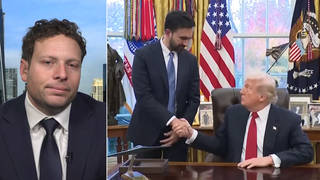
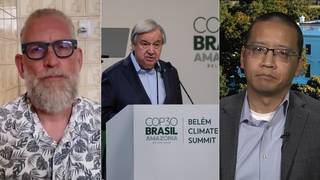
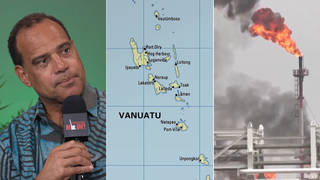
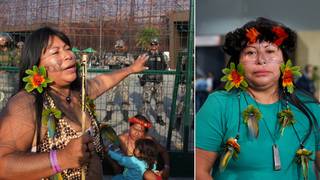





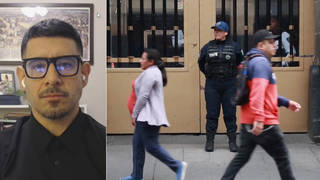
Media Options